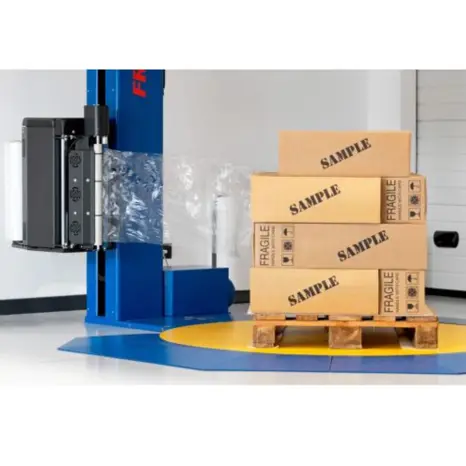How To Wrap A Pallet: Essential Techniques For Secure Packaging

Understanding how to wrap a pallet correctly is essential for any shipping operation. Whether you're wrapping pallets with plastic wrap manually or using machines, mastering the right techniques ensures load stability and prevents damage. This comprehensive guide covers the fundamentals of creating a properly wrapped pallet every time, helping you maintain product integrity throughout the supply chain.
Understanding Pallet Wrapping: Fundamentals And Benefits
When wrapping pallets with plastic wrap, the material serves as a productive barrier that holds items together and shields them from environmental factors. Quality matters significantly in this process - using professional grade stretch film, like those available in FROMM's pallet wrap range, ensures better load containment and reduces the risk of product damage. Professional grade film offers superior puncture resistance and maintains optimal tension through the wrapping process, resulting in a more secure loads and reduced material waste.
How to Wrap A Pallet By Hand: Step-By-Step Guide
Wrapping pallets by hand is a straightforward but detail oriented process. Follow these steps to ensure a properly wrapping pallet every time:
Step 1: Secure The Base
Begin by anchoring the plastic wrap firmly to a corner post, creating a strong foundation for the wrapping process. Wrap the base three times, ensuring consistent tension throughout. Extend the wrap slightly beneath the pallet deck to create a secure attachment point that prevents load shifting during transport.
Step 2: Build Strong Layers
Maintain consistent tension while working upward in a spiral motion. Overlap each layer by approximately 50% to ensure a continuous, protective barrier. Keep the wrap close to the load to avoid air pockets and loose sections.
Step 3: Lock The Load
Reinforce critical stress points where movement is likely during transport. Pay extra attention to the top of the pallet by using cross-wrapping patterns to prevent vertical movement. Finish by tucking or heat-sealing the wrap's final edge securely.
Pro Tip: Always use high-quality plastic wrap for maximum durability and flexibility. Explore FROMM's Pallet Wrap for top tier options.
How To Wrap A Pallet With A Machine: Maximising Efficiency
For high volume operations, wrapping machines streamline in the process, saving time and improving consistency. Follow these steps to achieve a properly wrapped pallet with a machine:
Step 1: Position The Pallet
Place the pallet on the turntable or conveyor system of the wrapping machine. Centre it to ensure even coverage.
Step 2: Attach The Wrap
Secure the plastic wrap to the pallet's base. Some machines offer automatic attachment, simplifying this step.
Step 3: Start Wrapping
Activate the machine. It will rotate the pallet while applying the wrap evenly, ensuring consistent tension and complete coverage.
Step 4: Finish And Remove
Once the wrapping cycle is complete, the machine will cut the wrap automatically or notify you to do so. Carefully remove the pallet for transport or storage.
For uniquely shaped load, Orbital Wrapping Systems provide advanced solutions to accommodate irregular shapes and sizes while maintaining optimal wrap tension.
Techniques For A Properly Wrapped Pallet
To ensure your pallet is securely wrapped, follow these best practices:
- Anchor The Base: A Stable foundation prevents load shifting during transport.
- Maintain Consistency: Overlap each layer of plastic wrap by at least 50% for even coverage.
- Reinforce Stress Points: Add extra layers at corners, edges, and the top of the pallet.
- Inspect The Wrap: Check for gaps, loose ends, or tears before shipping.
Advanced Tips For Wrapping Pallets
Tailor Techniques To Load Type
Sharp edged loads require extra protection to prevent punctures, while heavy items benefit from increased wrap layers at stress points. Irregular shapes may need specialised wrapping patterns for optimal containment.
Adapt To Environmental Conditions
Temperature affects plastic wrap performance. Adjust film tension in cold environments where flexibility decreases, or use heat-resistant films for warmer conditions.
Monitor Material Efficiency
Regularly evaluate your material usage to reduce waste while maintaining load stability. Train staff on consistent wrapping techniques to improve overall efficiency.
FROMM Packaging: Your Partner In Pallet Wrapping Solutions
Wrapping pallets effectively is crucial for maintaining product integrity throughout the supply chain. FROMM Packaging Australia provides comprehensive solutions, including high quality Pallet Wrap and advanced Wrapping Machines. Whether wrapping pallets with plastic wrap or by hand or automating the process, FROMM's tools and expertise ensure secure, stable loads every time.









